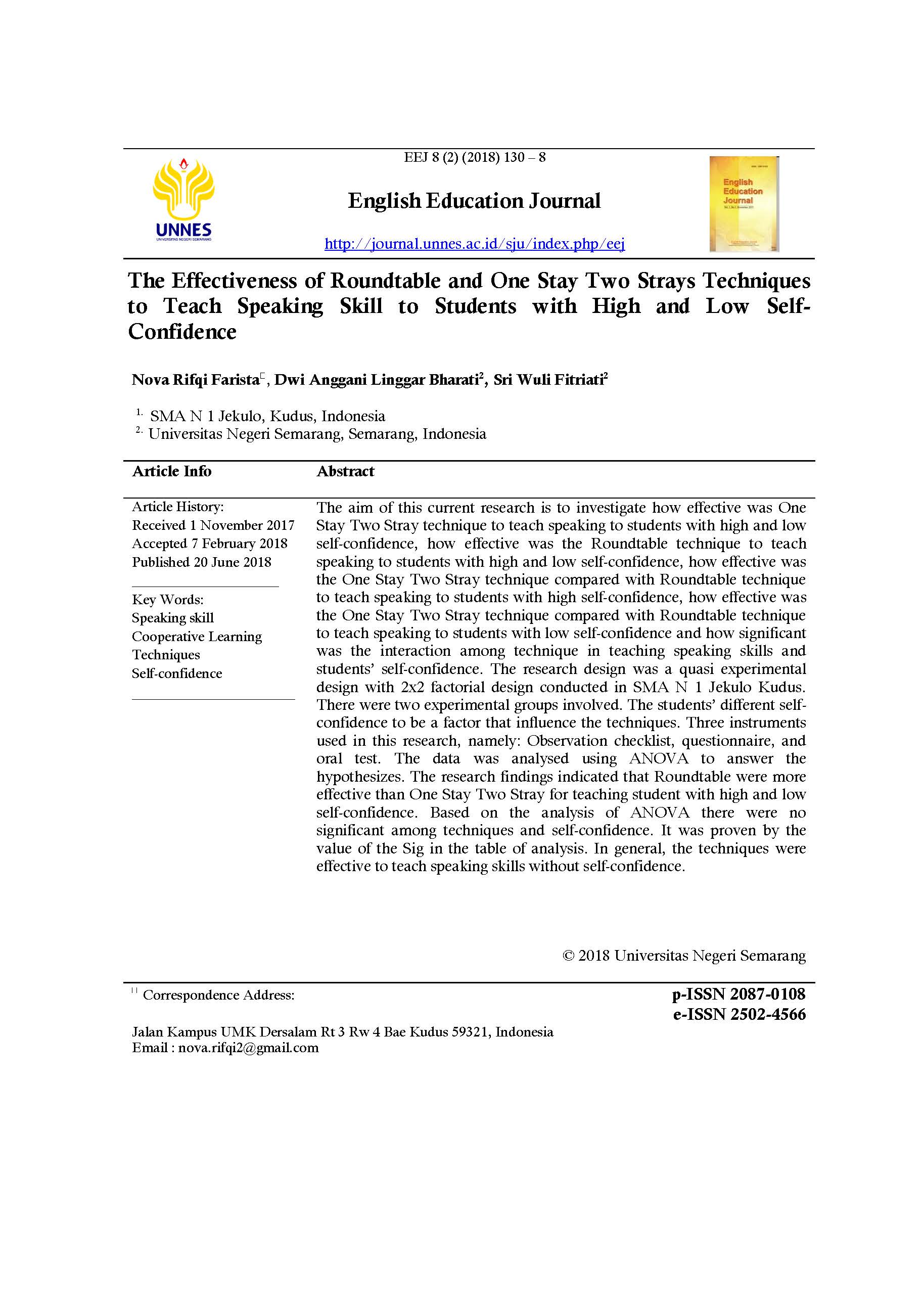The Effectiveness of Roundtable and One Stay Two Strays Techniques to Teach Speaking Skill to Students with High and Low Self-Confidence
##plugins.themes.academic_pro.article.main##
Abstract
The aim of this current research is to investigate how effective was One Stay Two Stray technique to teach speaking to students with high and low self-confidence, how effective was the Roundtable technique to teach speaking to students with high and low self-confidence, how effective was the One Stay Two Stray technique compared with Roundtable technique to teach speaking to students with high self-confidence, how effective was the One Stay Two Stray technique compared with Roundtable technique to teach speaking to students with low self-confidence and how significant was the interaction among technique in teaching speaking skills and students’ self-confidence. The research design was a quasi experimental design with 2x2 factorial design conducted in SMA N 1 Jekulo Kudus. There were two experimental groups involved. The students’ different self-confidence to be a factor that influence the techniques. Three instruments used in this research, namely: Observation checklist, questionnaire, and oral test. The data was analysed using ANOVA to answer the hypothesizes. The research findings indicated that Roundtable were more effective than One Stay Two Stray for teaching student with high and low self-confidence. Based on the analysis of ANOVA there were no significant among techniques and self-confidence. It was proven by the value of the Sig in the table of analysis. In general, the techniques were effective to teach speaking skills without self-confidence.
